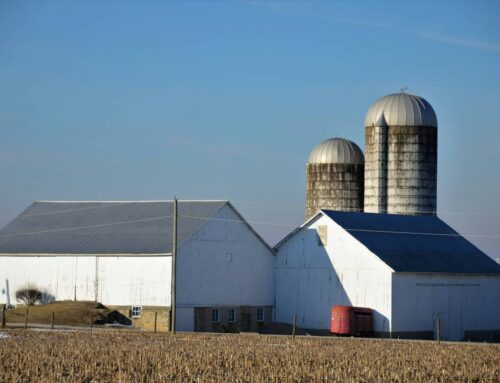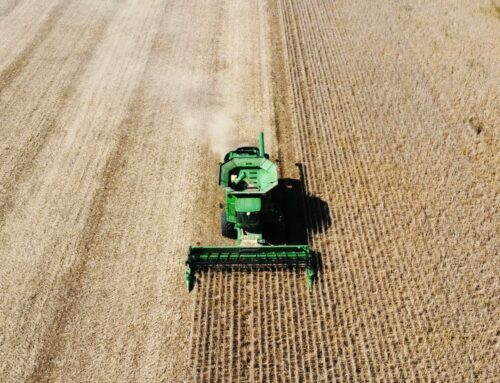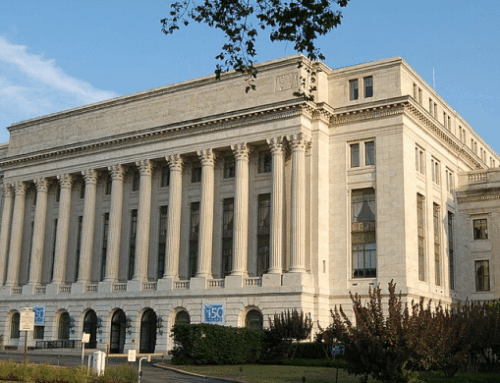Today, the U.S. Department of Agriculture’s Economic Research Service (USDA-ERS) projected that U.S. farmers and ranchers will continue to do well this year reaping business income – importantly, without an increase in federal farm subsidies. In its new report today, USDA-ERS reports that American farmers and ranchers are projected to earn $116.6 billion in 2024 net farm income.
This level of profitability would be equal to 98.7 percent of the average annual net farm income (118.1 billion inflation-adjusted) the sector experienced over the last 20 years (2003-2022). It would also come on the heels of three of the top five most profitable years for agriculture (2021, 2022, and 2023) since 1973 including a net farm income record $196 billion in 2022.
Government payments to agriculture, including federal farm subsidies, are expected to reach $10.2 billion in 2024, excluding the billions more in federal crop insurance subsidies.
USDA-ERS’s new estimates today on farm income and government payments come on the same day as the Congressional Budget Office (CBO) will release an updated Budget and Economic Outlook report, which will document continued trillion-dollar deficits, record U.S. national debt, and rising costs to service our national debt.
Simply put, there couldn’t be a better time for Congress to rein in wasteful farm subsidies. The five-year farm bill is conveniently up for reauthorization this year. The last farm bill, enacted in 2018, is on track to cost taxpayers a record $1.5 trillion over ten years.
USDA-ERS’s new update today sheds light on the current state of the agricultural economy, including:
- Farmers are expected to continue to fare well overall financially in 2024 despite recent supply chain challenges, extreme weather disasters, relatively higher input costs, and more.
- Indemnities from the highly subsidized crop insurance program are expected to reach $20.1 billion in 2024, coming off two years of high levels of payouts from the federal program.
- Despite receiving lower levels of farm subsidies than in recent years, U.S. farmers and ranchers are expected to earn average levels of income in 2024, showing how the farm economy can thrive without excessive spending on federal farm subsidies.
Despite this, certain Members of Congress are calling for drastically higher levels of farm subsidies in the next farm bill through commodity and crop insurance programs. Specifically, proposals to increase government-enforced crop reference prices (known as Price Loss Coverage, or PLC) would expand already costly subsidies for certain favored crops, costing taxpayers billions or tens of billions more. PLC and other farm subsidy programs primarily benefit producers of peanuts, rice, wheat, cotton, corn, and soybeans. Companies transporting and processing these crops include multinational conglomerates.
CBO already projects the following taxpayer costs arising from federal farm subsidy programs (from FY24-33), without any increase in subsidies that may or may not flow from the upcoming farm bill:
- PLC – $33 billion
- Highly subsidized federal crop insurance – $101 billion
- Agriculture Risk Coverage (ARC) – $19 billion
- Farm bill disaster programs – $10 billion
= $163 billion
(* Please note the total above does not include other supplemental “emergency” disaster subsidies and other programs authorized outside the farm bill process, including subsidy programs originating from USDA’s Commodity Credit Corporation).
Proposals to expand unnecessary farm subsidies contend that additional funding could be siphoned from Inflation Reduction Act (IRA) investments in agricultural conservation programs. This week, TCS joined nearly 30 other organizations in a letter to House and Senate Agriculture Committee leaders urging them to reject this fiscally irresponsible proposal.
Expanding already generous levels of crop subsidies for certain producers, while other farmers thrive with little or no subsidies at all, is not a recipe for long-term success in agriculture. Farmers say so themselves. Listen to our 2023 Farm Bill Field Trip podcast with Nebraska farmers Scott and Skyles Kinkaid to hear their views on whether taxpayers should continue to subsidize large, successful farm operations. Academics have also linked taxpayer subsidies to farm consolidation, less adoption of risk-reducing measures, and other consequences.
Taxpayers currently provide unlimited subsidies to certain agricultural producers within the federal crop insurance program. A recent Government Accountability Office (GAO) report recommended Congress rein in subsidies flowing to both agricultural producers through unlimited premium subsidies, in addition to overly generous subsidies for private insurance companies. GAO has identified individuals with billions in net worth receiving federal crop insurance subsidies, in addition to private insurance agents reaping more than $1 million in federal subsidies to sell and service just one policy.
With more than $34 trillion in national debt and a thriving farm economy overall, our country cannot afford to squander more taxpayer dollars on federal farm subsidies for individuals who do not need them.










